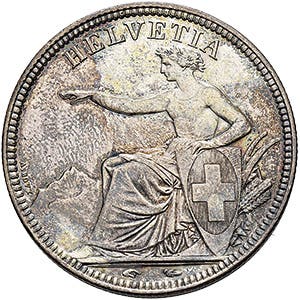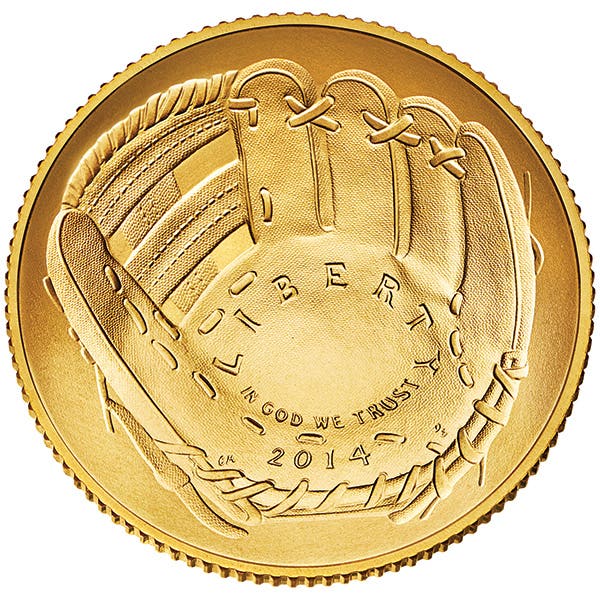Portraits of a Life Well-Lived
From Feb. 6, 1952, when she ascended to the British throne, Queen Elizabeth II held sway as monarch until she passed away on Sept. 8, 2022 at the age of…
From Feb. 6, 1952, when she ascended to the British throne, Queen Elizabeth II held sway as monarch until she passed away on Sept. 8, 2022 at the age of ninety-six. That’s 25,782 days, a truly amazing span of time, and a record for any national ruler. Despite her advanced years, the queen’s passing has still come as a shock to much of the world. Collectors are aware that she has almost certainly been on more coins than any other person in history. That in turn means there may be more ways to collect the coins of Elizabeth than we can count. But the easiest might be a simple assembly of the portraits of the queen on the circulating coins of Great Britain.
First, Mary Gillick
The initial image of Queen Elizabeth on the coins of Great Britain, and of many colonial lands of the British Commonwealth, was the work of Mary Gillick. The image has become a classic one, showing a young Elizabeth, full of energy, and not wearing any crown. Rather, she wears a laurel wreath, and has ribbons in her hair.
To say it’s easy to find an example of British coinage bearing the Gillick image of a young Elizabeth might qualify as the understatement of the year. This portrait of the queen is on everything from the tiny British copper pieces up to the gold sovereigns. She is surrounded by what we might say are the usual suspects, at least when it comes to the legends on British coinage. These include her name, as well as: “Dei Gratia • Regina • F:D,” the Latin for, “By the grace of God, Queen,” and the “FD” is shortened from “Fidelis Defensor,” meaning “defender of the faith.” The British monarch is the head of the Church of England and has been since the reign of King Henry VIII.
Second, Arnold Machin, 1968 – 1984
The Gillick image was a well-established standard by 1968 when the second portrait of the queen graced the coins of Britain. The work of Arnold Machin, the second design shows the queen wearing the Royal Diamond Diadem Crown, thought of by many as a tiara. It shows her in a more mature image yet presents her with no less grace. Since this image was the main one used for nearly twenty years, it has become as common as the Gillick design, and is as easy to find.
Third, Raphael Maklouf, 1985 – 1997
It was a sculptor born in Jerusalem who won the honor of having his image on the third iteration of British coins showing Queen Elizabeth. This image does not really show the queen as all that much older. But, if possible, it presents her in an even more elegant way, wearing a larger crown, as well as earrings. The legends we have mentioned are still there surrounding her but have been abbreviated even more.
As with the earlier two designs, this image is so common that finding a great example of one is amazingly easy. We won’t be able to get it on a British farthing, as those were discontinued years before this design was created. As bad luck would have it, even the half penny denomination came to an end a year before this design was released. But there are still copper penny pieces to be had, for those of us who wish to stay with low denominations and low prices. On the other hand, for those of us who adhere to the phrase, “Go big or go home,” there are also plenty of gold sovereigns bearing this image.
Fourth, Ian Rank-Broadley, 1998
It was almost the end of the millennium when the fourth official portrait of Queen Elizabeth was unveiled on British coins. This time it was the artistry of Ian Rank-Broadley, who had studied both at home and at the British School at Rome in his efforts to become a master sculptor. Yes, his rendering of the queen shows her as an older woman, but still does so in the best possible light. In this portrait, she again wears the tiara.
Fifth, Jody Clark, 2015
The final portrait of Queen Elizabeth to grace to everyday coins of Great Britain is the artwork of Jody Clark. Mr. Clark was a Royal Mint employee when he submitted his design anonymously into a competition for a new and updated obverse design. In winning the competition he became both the youngest designer of such a portrait, and also the first Mint employee to have landed such a commission in more than one hundred years. He also set a record in being the first person to produce a design of the queen entirely through digital means.
In this final version of a portrait of Queen Elizabeth, she again wears the royal diamond diadem, as well as earrings. British coins sporting this royal image are for a fifth time incredibly easy to come by.
From small to large
Whether a person wants to collect portraits of the queen on a small scale – such as copper pennies – or on some grander scale – such as gold sovereigns – there are five possibilities that are all quite easy to obtain. A simple quintet of coins can easily become an attractive, small collection honoring the woman who reigned longer than any other monarch in history. As well, proof sets of the different images are also very affordable. Indeed, there is an enormous number of ways to assemble some type of collection honoring Britain’s longest reigning and much-loved monarch.









